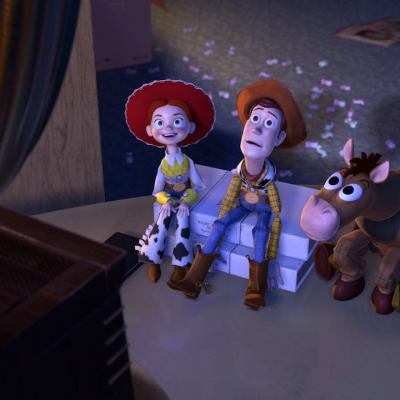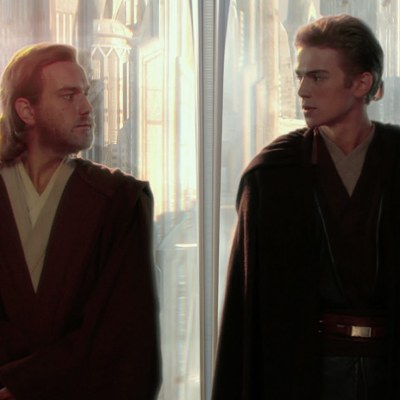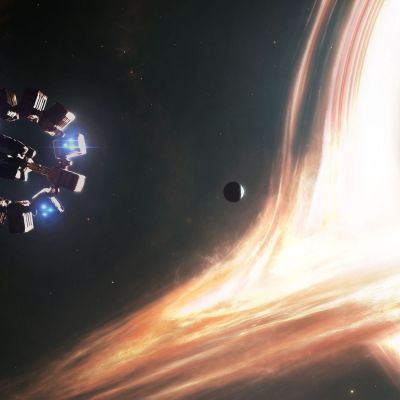Lightyear: Easter Eggs and Classic Sci-Fi Movie References
We examine the many easter eggs, influences, and homages in Pixar's new movie, Lightyear.
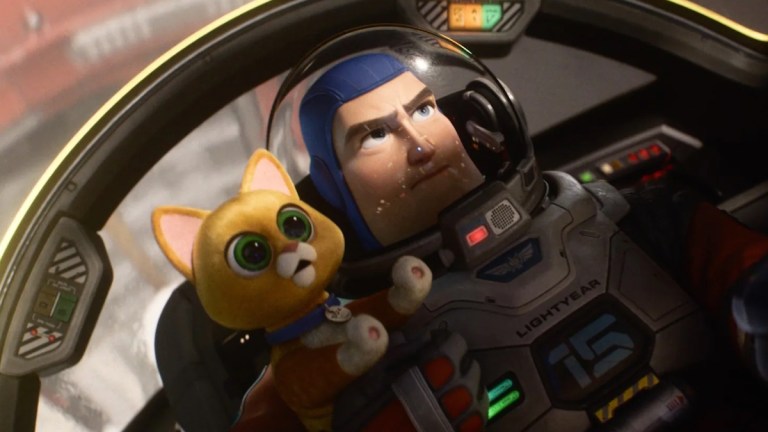
This article contains Lightyear spoilers.
The conceit of Lightyear, this year’s soft-boiled sci-fi animated film from Pixar, is that in 1995, Andy from Toy Story had a favorite film—and Lightyear is that film. The team that created the movie envisioned it as a classic sci-fi feature that had already been around for a while before Andy received his Buzz Lightyear toy. Director Angus MacLane even told reporters at an early release presser that he imagined by 1995, Lightyear and Buzz had already been through a number of retellings: from the initial film that was made in the late ‘70s or early ‘80s through video games and a cartoon series for younger viewers. That pattern evokes films like Star Wars (1977), with the Droids and Ewoks kids’ cartoons that followed in the 1980s. It’s also the pattern followed by Ghostbusters (1984) and the subsequent The Real Ghostbusters cartoon series that ran throughout the 1980s.
The aesthetic of Lightyear honors those early films.
“There’s a lot of really specific visual connections to things that are meant to be really subtle in the attempt to seat it in that kind of universe,” MacLane revealed in an interview with Den of Geek. The new animated feature evokes a lot of its predecessors in the look, style, music, and even gestures the characters make. Here’s our look at a few things that gave us swells of nostalgia for those sci-fi features.

Toy Story
Obviously, the film has plenty of moments that call back to the original appearance of the toy Buzz Lightyear. Buzz’s penchant for narrating his own adventures has a very human moment in the film where Buzz is teased for the habit. (Buzz’s line “You’re mocking me, aren’t you?” appears in both movies, but the response in Lightyear is a warmer one, a tease from an old friend.)
As the movie progresses, however, those nods become less frequent.
“I don’t want to remind the audience of a better movie,” MacLane quipped. “You want to have enough so you’re indicating its connection to the character. But a lot of modern films trade heavily on nostalgia as purely recognition as the punchline. I feel like that’s not quite enough to make a sustainable film.”
Still, there are a few other elements, such as when Buzz arrives on the film’s main planet and attempts to reach Star Command by saying, “Buzz Lightyear to Star Command, respond. Why don’t they answer?” which is taken straight out of the 1995 movie.

E.T.
Everyone who has watched the Toy Story series is familiar with the catch phrase, “To Infinity and Beyond!” In Lightyear, this catch phrase becomes a call and response the Space Rangers use. Alisha Hawthorne, Buzz’s commander and best friend, says it back and forth to Buzz several times at the opening of the film
But it’s the hand gesture that accompanies the phrase that evokes an earlier film not named Toy Story. When Hawthorne and Buzz say their parts, they reach out a single finger to the other. The move is hugely reminiscent of the connection between Elliott and E.T. in the 1982 classic from director Steven Spielberg. The reference was completely unintentional for the team, however; MacLane explained that this was a gesture he did with his daughter, so it’s a small Easter Egg for MacLane’s own family.
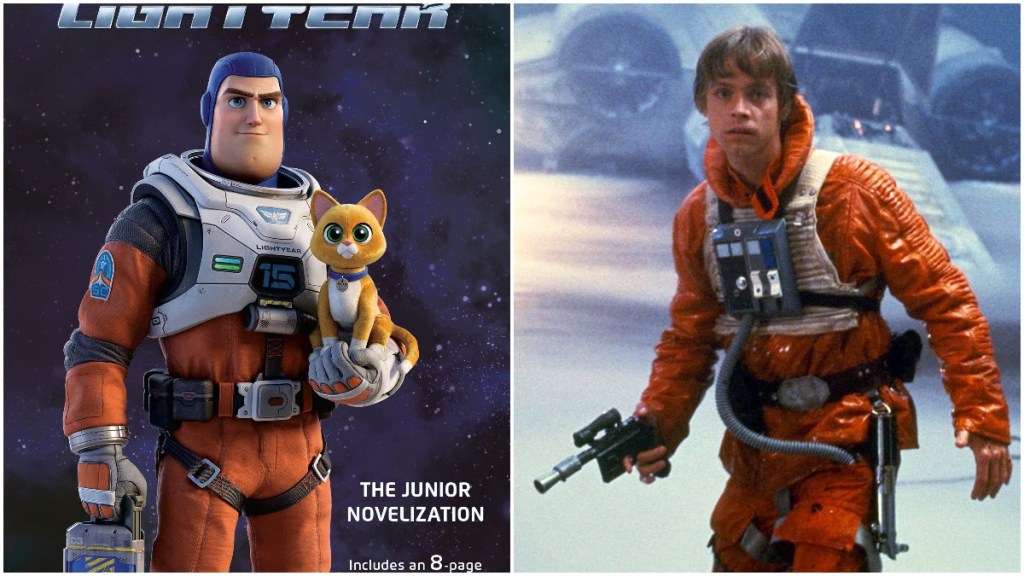
Star Wars
The synergy between Lightyear and the Star Wars films is undeniable, if only because the influence of Star Wars over the whole genre has been so widespread. Two of the more dramatic nods viewers might note are the lightsaber-like equipment that the Space Rangers use: these aren’t swords made of energy, but a more functional multi-tool that the Space Rangers wield. The tentacled monsters we see them use this weapon to escape in Lightyear’s opening sequence also appears to be directly lifted from the trash compactor scene in the original 1977 Star Wars.
There are many more elements of the original Star Wars trilogy sprinkled throughout Lightyear. For starters, Buzz Lightyear’s ship looks a lot like Luke Skywalker’s X-Wing when it is parked with the landing gear down. Buzz similarly wears an orange flight suit like Luke while performing those tests. Furthermore, when Buzz specifically returns to his marooned planet after Zurg’s robot army has arrived, the marshy landscape he lands on intentionally evokes Yoda’s planet of exiled choice, Dagobah.
Still, it’s a musical cue that struck an even deeper connection. When villain Zurg appears on the screen, the score swells in a piece that feels like a musical reference to John Williams’ famous “Imperial March.” Lightyear composer Michael Giacchino is no stranger to space opera: among his many films, he was the score composer for Star Trek in 2009 and Rogue One in 2016.
It’s also worth recalling that in Toy Story 2, the original lore suggested Zurg was Buzz Lightyear’s father, just like Luke and Darth Vader in The Empire Strikes Back. The movie Lightyear retcons this—and the director explained his rationale for why here—but it still gives a nod to the concept when Zurg first removes his mask in an effect that is reminiscent of how Vader’s helmet is applied in Empire Strikes Back.
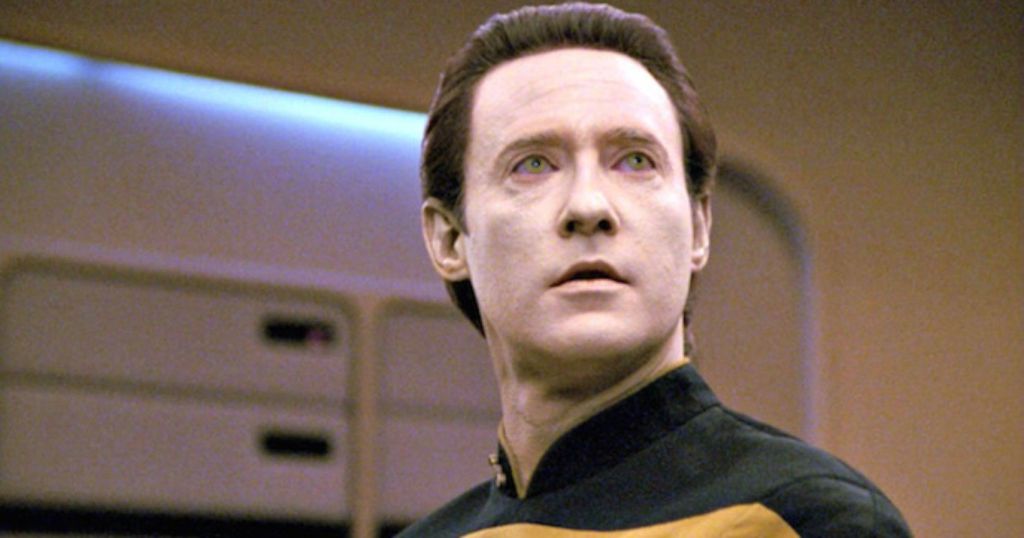
Star Trek: The Next Generation
There’s no shortage of orange cats in media, whether it’s Garfield or Morris the spokes-cat for 9Lives. They also make appearances in science fiction, such as Ripley’s cat, Jonesy, in MacLane’s favorite film Alien.
But the best comparison between Lightyear’s SOX, a robot cat voiced by Peter Sohn, and another science fiction feline is Data’s orange cat companion Spot in Star Trek: The Next Generation. In Star Trek, Spot is a real, living cat helping an android become more human. In Lightyear, SOX is a robotic therapy pet who helps Buzz deal with (and recognize) his own humanity.
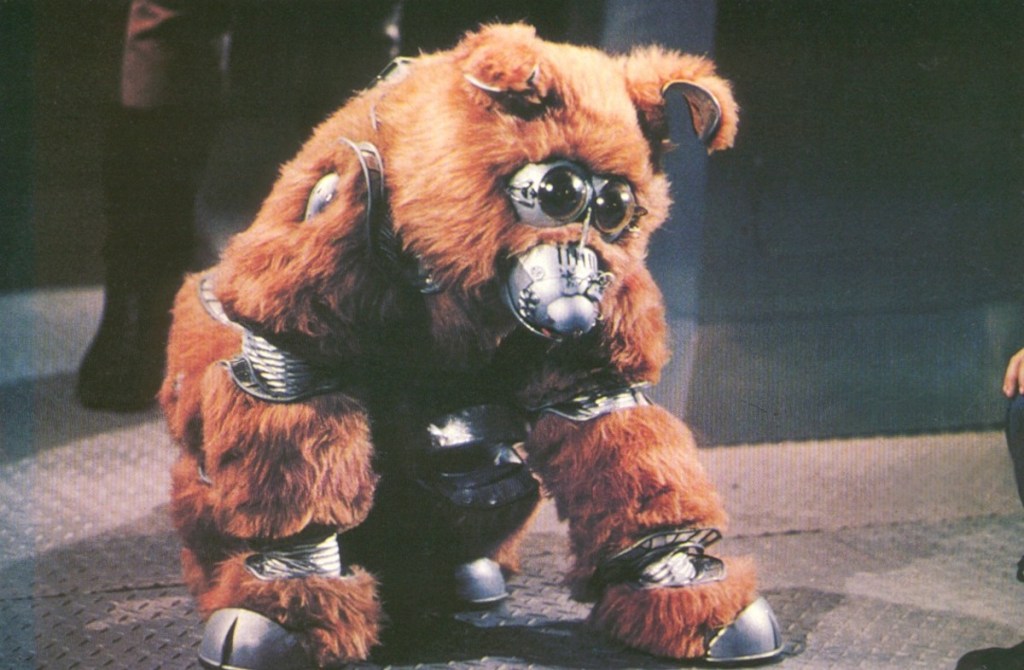
Battlestar Galactica (1978)
But if we’re talking about robot pets, we cannot ignore the actual robotic animal that clearly inspired SOX: Muffit II. In the original, kitschy Battlestar Galactica, which is far campier than its 2000s reboot, Muffit II is a robotic dog intended to replace the loss of a beloved pet. A main character lost their dog Mufit to falling debris, so their doctor gifts the above creature as a form of therapy (and a way to create a cute toyetic sidekick).

Star Trek IV: The Voyage Home
There are also plenty of science fiction films that play with the idea of lassoing the sun and tying that into time travel, but none are so vivid and beloved as the 1986 Star Trek film about saving the whales. While in Lightyear, Buzz’s attempts to lasso the sun result in time travel in the opposite direction—he’s moving so fast that time passes slower for him than for those who remain planet-side—the nostalgia for another crew trying to save the day by looping around a star comes through.
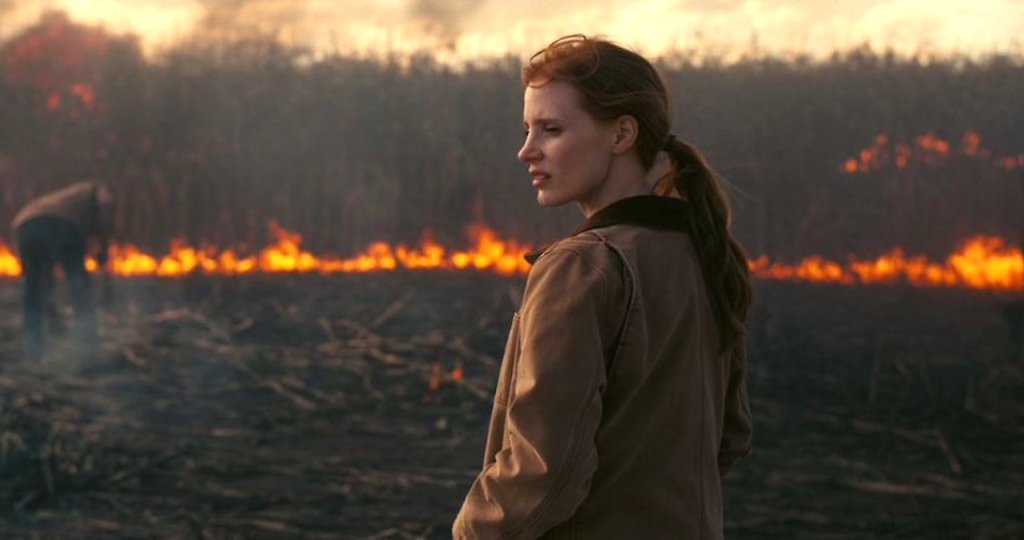
Interstellar
Still, the prospect of the main character staying relatively the same age while all the people they left behind age years or decades appears to be drawing upon a far more recent science fiction film: Christopher Nolan’s Interstellar. In that movie Matthew McConaughey, Anne Hathaway, and several other actors portray astronauts who travel through a wormhole to save Earth. But on the other side of that wormhole is a massive blackhole whose gravitational pull greatly distorts gravity (and thereby time), causing severe time dilation of the variety seen in Lightyear.
Thus one of the most memorable scenes in Interstellar is, after being trapped on a planet near the black hole for an hour, McConaughey’s Cooper discovers 22 years on Earth have passed him by, and he has a backlog of videos where he can see his young children grow into bitter thirtysomethings who have careers, and in one case, children of their own. And both adult children have now given up hope on their father ever coming home.
Lightyear more gently riffs on this when Buzz discovers his best friend Alisha has passed away after watching her age progressively day by day, or year by year in her case. Eventually, Buzz winds up working with Alisha’s granddaughter, just as McConaughey’s Coop one day meets his own child on her deathbed as an old woman surrounded by children and grandchildren of her own.
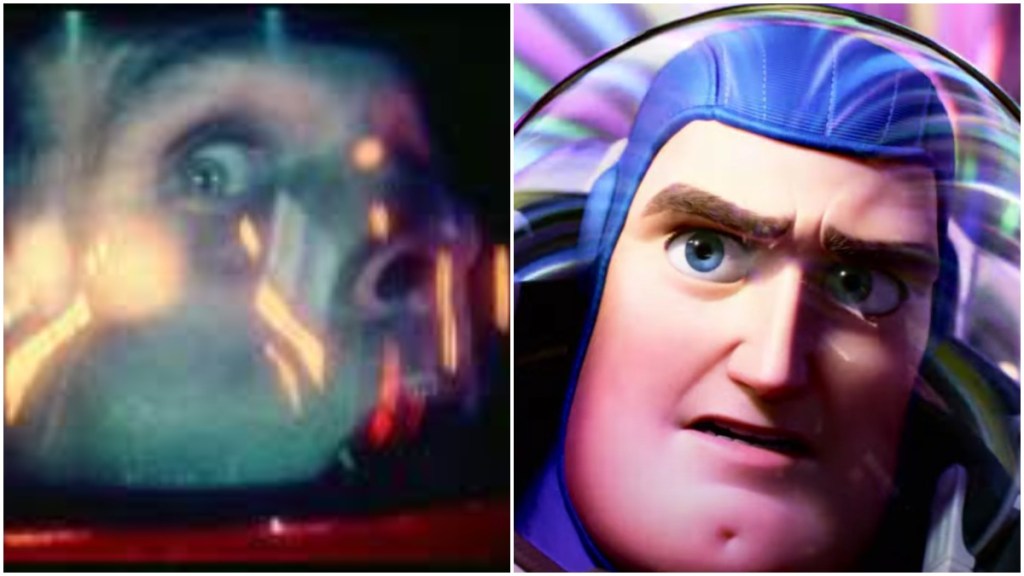
2001: A Space Odyssey
The earliest film on this list, Kubrick’s 1968 classic 2001 features a robot named HAL, whose one creepy eye glows with red light. The eye becomes progressively more malevolent as the story progresses, and HAL plots the death of astronaut David Bowman. Lightyear borrows some of that eerie factor in the eyes of its villainous robots and artificial intelligence.
Additionally, the psychedelic image of panes of rainbow-colored light appearing whenever Buzz approaches or enters hyperspeed is very much lifted from the effect that occurs when David eventually enters into an alien portal in 2001. It’s also the effect that inspired the “light speed” imagery in Star Wars.
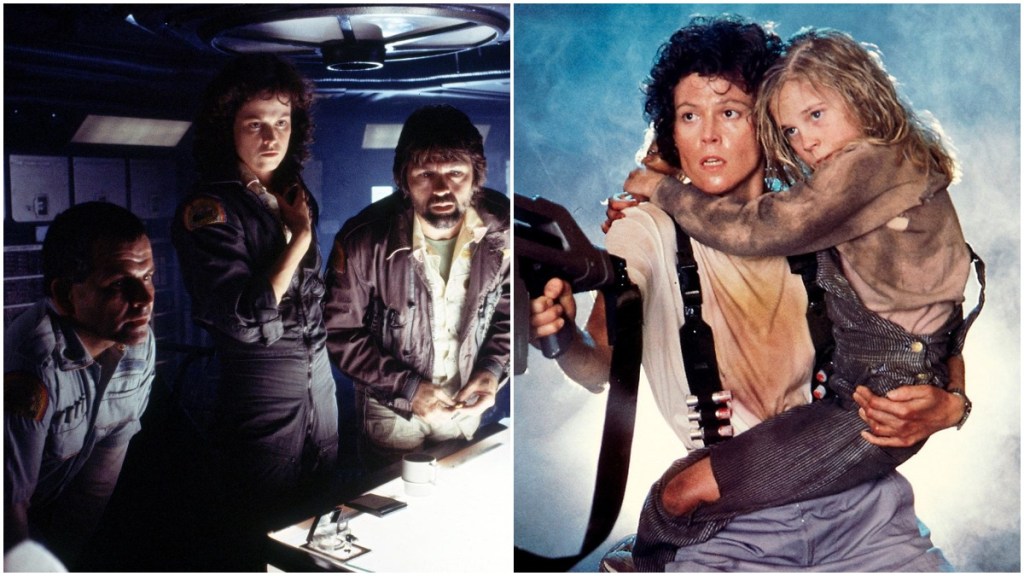
Alien and Aliens
Ridley Scott’s first sci-fi masterpiece is likely a little too dark for Pixar’s core audience, yet there remains a few aesthetic nods to this all-time classic. When Buzz finally gets aboard Zurg’s alien ship, its interior design intentionally echoes Alien in a few ways. The primary one is that the endless curved arches throughout the ship’s hallways look like the biomechanical pathways on the Space Jockey’s ship in Alien.
Additionally, Lightyear tips its hat to James Cameron’s 1986 sequel, Aliens, where at one point Buzz and his crew of rookies find an old, abandoned outpost for their colony which has been overrun by hibernating alien monsters, not unlike what happened to the space colony’s nuclear coolant plant on LV-426. Later on one of the space cadets attempts to fight off the enemy in a yellow loading vehicle reminiscent of Ripley’s iconic loader from the Aliens climax.
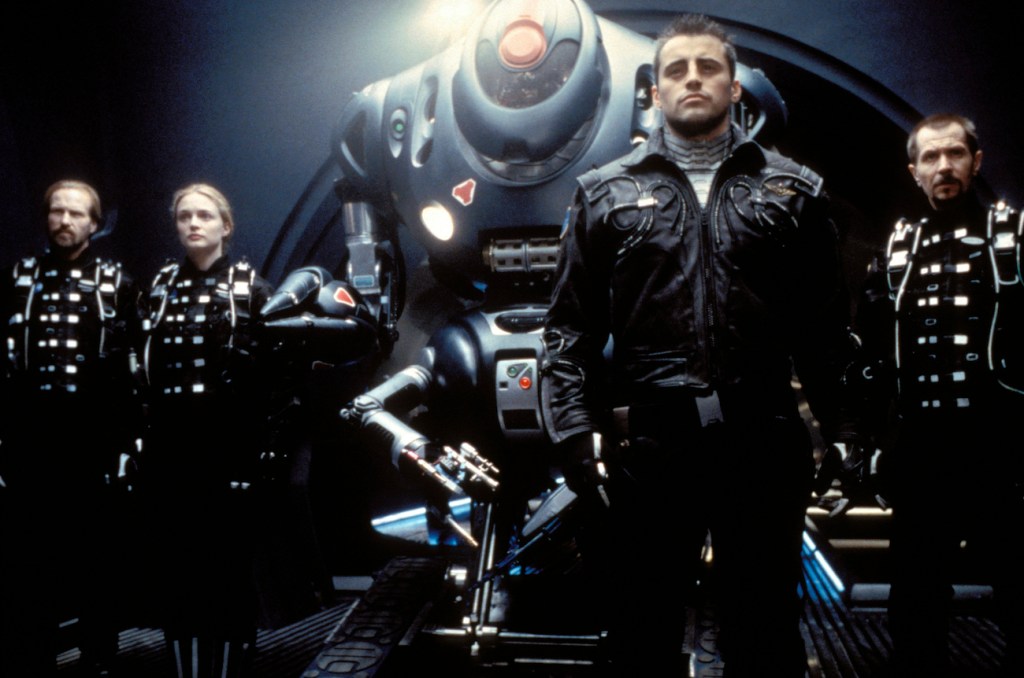
Lost in Space (1998)
Perhaps less “homage” than inspiration, the little loved and less remembered big screen revival of Lost in Space from the ‘90s seems to inform the plot of Lightyear in a pretty significant way. In the reimagining of the classic 1960s sci-fi TV series, the Robinson family is again lost in space when they get marooned on a strange planet. Unlike the TV show, however, things take an extremely dark turn when they discover there is a bubble on this planet that has distorted time (the mechanics are murky).
The key take away though is that the Robinson family’s youngest member, 10-year-old Will Robinson (Jack Johnson), has grown into a bitter old man (Jared Harris). As it turns out, Old Man Will’s alternate future went terribly wrong after most of his family were killed. He’s thus grown up in isolation alongside the manipulative Dr. Smith (Gary Oldman), who has been transformed into a literal monster due to a space spider scratching him. As a result, Old Will is obsessed with creating a time machine that will let him travel back in time and prevent his family’s space travel mission from ever going astray—although the evil Spider-Smith has more nefarious designs for the time travel. It of course does not work out for either of them and the young, prime Robinson family survives but remains lost in space.
One does not have to squint too hard to see the basic plot points of young Buzz discovering his enemy Zurg is actually an older version of himself who is obsessed with traveling back in time and preventing his crew from ever getting lost in space.
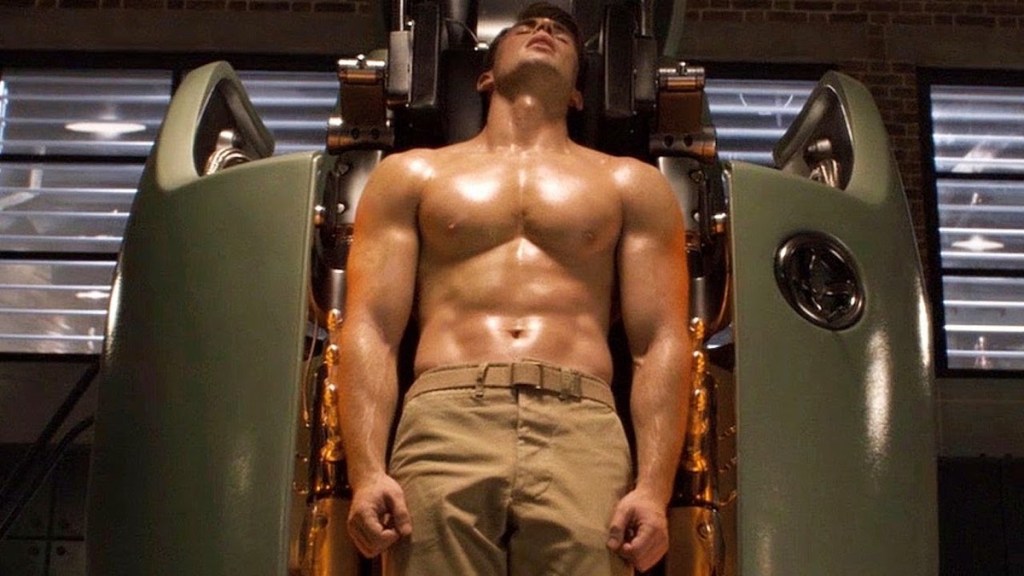
Captain America: The First Avenger
In contrast, there’s also a nod to another more recent film that might not be so obvious without the two sharing an actor. However, with Chris Evans as Buzz Lightyear, the moment when Buzz pops out of cryogenic sleep is incredibly evocative of the moment when Evans’ Captain America emerges from his transformation in 2011’s Captain America: The First Avenger.
And, of course, Captain America is effectively cryogenically frozen between World War II and modern day, which gives us another heart-wrenching similarity to Buzz. During his missions, Buzz doesn’t age while all his friends do. It seems both of Evans’ characters are destined to live in a future they didn’t ask for.
Nintendo and the Real World
Two smaller references are clearly in the film for adult viewers. On Buzz’s ship, there’s a piece of technology that gives him trouble. He pops out a cartridge, blows into it to clear out the dust, and sticks it back in, upon which it miraculously works! Anyone who played on an original Nintendo Entertainment System knows that (scientific evidence aside), this was absolutely the way to make game cartridges cooperate!
In addition, the ship’s internal voice activated navigator (IVAN), the equivalent of a GPS, acts like a real-world, misbehaving GPS. To really evoke that connection, the Lightyear team brought on Mary McDonald-Lewis to voice IVAN—she’s also the voice of OnStar’s navigation system.
What parts of Lightyear made you nostalgic for earlier films?

